
January 22, 2024
Armed with decades of professional experience, hours of SLAS volunteer participation and a wellspring of innovative ideas, three new members join the SLAS Board of Directors at SLAS2024. Along with the six current Board members, Melissa Crisp, Ph.D., Peter Hodder, Ph.D., and David Jennions, Ph.D., share their vision and plans for the future. Learn more about this exceptional trio and their efforts to bring the enrichment they have experienced to the SLAS community.
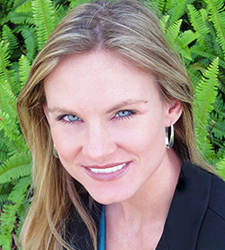
Melissa Crisp, Ph.D., is director of automated assay screening at Eli Lilly and Company (San Diego, CA, USA), and has more than 15 years of experience in academic, pharmaceutical and evolving biotech start-up environments – much of this working at the interface between scientific applications and automation technologies.
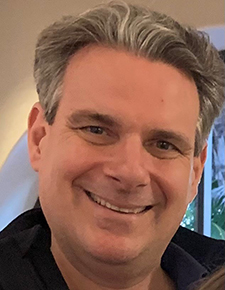
Peter Hodder, Ph.D., is executive director, head of lead discovery and characterization for Amgen, USA (Thousand Oaks, CA, USA). As a biopharma scientist engaged in the implementation of laboratory automation and screening technologies, Hodder has 25 years of experience in drug discovery.
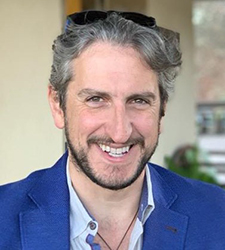
David K. Jennions, Ph.D., is senior director of R&D Systems for GRAIL, USA (Menlo Park, CA, USA), and has more than 15 years of experience in building integrated lab production systems – on increasingly greater scales – across drug discovery, CRISPR and oligonucleotide synthesis, mass production of edited cells, and various NGS workflows.
Why did you become a member of SLAS, and what have you found most beneficial from your membership?
Crisp: I was first introduced to the Society of Biomolecular Sciences (SBS), a predecessor organization to SLAS, in 2009, when I was a post-doc in The Herbert Wertheim UF Scripps Institute for Biomedical Innovation & Technology’s (Jupiter, FL, USA) high-throughput screening (HTS) lab. I later became involved in a rewarding volunteer capacity, starting with the Early Career Professionals Advisory Committee. SLAS offers it all for those of us in drug discovery. The synergy of networking with international colleagues from diverse disciplines, top notch scientific programming and exposure to cutting-edge technologies is the hallmark of SLAS that resonates with me.
Hodder: I joined SBS as a graduate student, and later joined the association that formed the other half of SLAS – the Association for Laboratory Automation (ALA). My reason for joining was straightforward: SLAS was the single professional organization that aligned best with my research interests and career aspirations. As I look back, the most beneficial aspect of my SLAS membership has been the enriching and fun experiences I have shared with other members. I affectionately call these “SLAS moments,” which I am certain other members have experienced, too!
Jennions: I have been a member of SLAS since the later days of ALA. I have been a member every year since – mostly in order to maintain connections with old colleagues and find new ones. There’s no better place to discover, discuss and link all the innovations in sciences, applications and executional technology across what is truly a mind-bogglingly diverse field.
How have your work background and life experiences in general prepared you to step into this new role as a Board member?
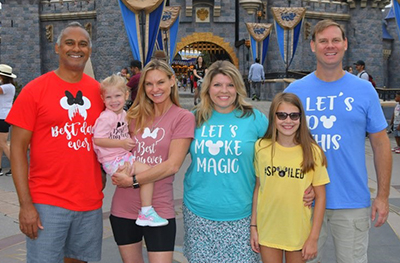
Crisp: Over the past two decades in the life sciences, I have been fortunate to navigate opportunities through diverse landscapes, spanning academic, large pharma and evolving biotech start-up environments in addition to exploring both large and small molecule spaces in drug discovery. In my current role, I have been working at the interface between scientific applications and automation technologies, allowing me to offer a valuable perspective for drug discovery from that experience. I’ve collaborated on the building of automated systems from the ground up and created scientific platforms to use those systems. I have also participated in many consortiums to advise companies on product development and extracted a lot of knowledge from these. Equally important are the insights generously shared by members of my SLAS network and beyond, forming a reliable source of diverse perspectives from which I can draw. Finally, working with the unparalleled SLAS professional team through multiple committees has given me a deeper appreciation and understanding of the SLAS mission and impact.
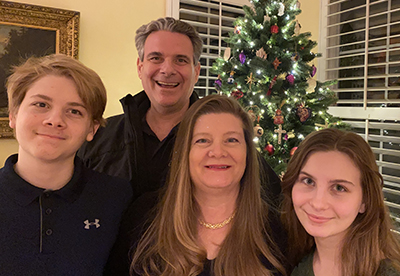
Hodder: My graduate research and professional career have focused on the application of drug-discovery technologies at the intersection of science and engineering. Through the decades, I have had different research roles in both industry and academia – from a bench biochemist to a professor and now directing biopharma research activities across multiple labs. Along this journey, I appreciate that SLAS has provided a wealth of technical and professional resources to me and my colleagues. As a Board member, I intend to leverage my experiences in industry and academia to ensure we have the right balance of science, engineering and engaged members to shape the future of laboratory automation and screening.
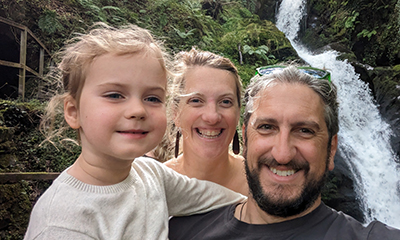
Jennions: I will start by admitting I knew almost nothing about the life sciences industry when joining it in 2007, and hence oligonucleotide manufacturing (and lab automation associated with such) was a fascinating education nearly from scratch. With subsequent forays into drug discovery and genetic screening, I started seeing the similarities between the applied principles in each discipline and started finding more interest in how the industry was standardized and organized. I joined the SLAS Technology Editorial Board, started volunteering for judging panels, such as Innovation AveNEW, and continued my experience by participating as chair to a number of the membership subcommittees. I hope to bring both some of the contexts of our members’ interests and a feel for the breadth of SLAS’s offerings to this new role.
As a newly elected Board member, how do you see yourself contributing to the SLAS mission to advance life sciences discovery and technology through education, knowledge exchange and global community building?
Crisp: I plan to collaboratively engage with other members of the Board to advance the SLAS mission through supporting educational initiatives, embracing diversity of thought on a global scale and encouraging better integration of ideas, data and technology within the community. By drawing on my own experiences in drug discovery and automation I can contribute and build on insights and ideas for fulfilling the strategic direction for SLAS. In the realm of global community building, I believe that promoting inclusivity and diversity is paramount and aspire to cultivate an environment that embraces a multitude of perspectives. By doing so, we can integrate broad perspectives to build a stronger network and play a significant role in advancing life sciences discovery and technology further. I would also like to see SLAS play a role in breaking communication barriers between science and the outside world.
Hodder: The advancement of life sciences discovery and technology is a team sport. To play this game successfully, SLAS should continue to unite its members from diverse scientific and engineering backgrounds. I also feel we should recruit and engage more members from emerging disciplines to our team, like data scientists and bio-software engineers.
Jennions: One of my primary reasons for getting more deeply involved with SLAS governance was via the membership committee/council – but specifically it was the 2017 SLAS International Conference and Exhibition in Washington, D.C., where a number of discussions made it clear that lack of visibility into, and recruitment for, the sort of opportunities the industry provided were actually slowing the pace of scientific advancement of our whole industry. This led to the founding of the Student/Early Career Professional Membership Sub-Committee. Expanding on this sense of need for outreach and education across the full diversity of our potential membership would be at the core of my contributions.
What is most exciting to you about taking on this new responsibility?
Crisp: I firmly believe in SLAS's strategic vision, and I am genuinely thrilled at the prospect of contributing to an organization that has supported me throughout my career. Giving back to SLAS is a rewarding opportunity, and I eagerly anticipate collaborating closely with the exceptional team of colleagues whose admirable and respected contributions have inspired me over the years. Together, I believe we can further elevate the impact and success of SLAS.
Hodder: What I find most exciting is opportunities for consilience. Our Board represents our diverse membership, and great ideas and initiatives will come from spirited discussions where several perspectives are represented. What I also find exciting is meeting our members – I encourage SLAS2024 participants to stop and say “Hi!” I can be found at one of my two favorite conference hangouts: the poster sessions or the exhibition.
Jennions: The opportunity to see more of SLAS’s broader work and help to continue extending that umbrella – both deeper into the community we serve as a portal for interactions and reaching into new areas and locations in order to expand and broaden our membership base. And, as always, working more closely with the awesome SLAS professional team!
Where do you see SLAS making the greatest impact in the next two years? The next five years?
Crisp: As an industry, we are imagining labs of the future as generative AI and data lead the way to the next wave of scientific innovation. SLAS is positioned to be a leader in data standardization and bringing together researchers and companies to better streamline the movement and utilization of data.
Hodder: Since its beginnings, SLAS has engaged its membership to help shape its strategy and purpose. This is one of our strengths! In the next two to five years, I see us continuing to harness this strength to impact laboratory research. I also see us making an impact by embracing emerging trends, for example in silico technologies. Although they have been around for some time, it’s clear we passed the inflection point for their laboratory applications.
Jennions: I am constantly impressed by the array of awards and grants offered by SLAS – from individual ones like Tony B. Travel Awards, the Innovation Award and the SLAS Graduate Education Fellowship Grant and the general SLAS Educational Fund, to those focused more on groups with awards such as a company’s appearance on Innovation AveNEW, the Ignite Award, and the New Product Award. Continuing to broaden inclusion throughout our industry (hence continuing the need to tailor such offerings) via these mechanisms, among others, would be one of the greater benefits we can work toward. And using this to support members in improving cross-pollination of ideas, and drive even more rapid growth, in a field that is already having such an impact on human health.
What would you tell someone who is considering becoming a member of SLAS?
Crisp: Do it and get involved! Beyond the conference, I encourage members to make the most of the vibrant community and volunteer opportunities, explore the wealth of knowledge available through SLAS's journals, content on APPLIED The SLAS Online Learning Center and the SLAS New Matter Podcast opportunities throughout the year, and engage with these resources to ensure a continuous and enriching experience. All of this allows you to stay connected, informed and inspired.
Hodder: Don’t hesitate to join us! SLAS has been – and will continue to be – a one-stop shop for professional and scientific development. We keep the community engaged with the constantly evolving world of laboratory automation sciences and provide multiple opportunities for our members to meet and socialize with like-minded laboratory professionals. Many of the people you meet here will be life-long colleagues and friends.
Jennions: One of my standard phrases, in regard to life sciences careers, is around the constant opportunity to take 90-degree turns and head off in new directions – either by discipline or by whole industries. Becoming a member is as much about exposure to all such exciting possibilities as it is the potential for connecting around individual relationships and solutions. And then you have the learning and content SLAS provides, which makes membership very worthwhile!
When not involved in work/SLAS activities, how do you like to spend your time?
Crisp: In San Diego, I recharge by getting outdoors, whether it’s for a run on the beach, going for a hike on Iron Mountain, sailing or paddleboarding on the Mission Bay, cycling along the coast, mountain biking or visiting the zoo. I also enjoy photography and painting. Although I am quite the amateur, they provide an occasional creative escape.
Hodder: Over the years I have picked up many hobbies, from sailing to brewing beer to achieving an airplane pilot’s license. One of my friends calls me a “serial hobbyist.” Otherwise, I spend my free time enjoying anything the outdoors offers: hiking, fishing, skiing, wine tasting or just hanging out in the sun.
Jennions: Exploring the world and learning more about it. I am certified (and certifiable) in rock climbing, scuba and skydiving, and love adventuring to places where it feels hard to be (especially ones with intricate technical skill requirements). More recently, though, I am rediscovering a love of simple travel and exploration as I introduce my daughter (now heading for her fourth birthday) to all the spectacles and interests of various places away from home.
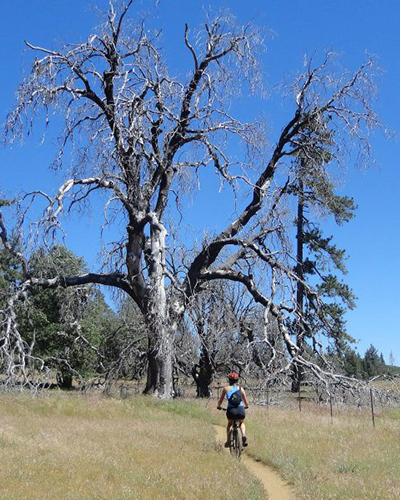
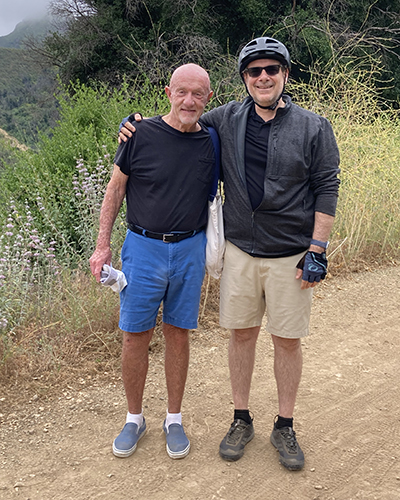
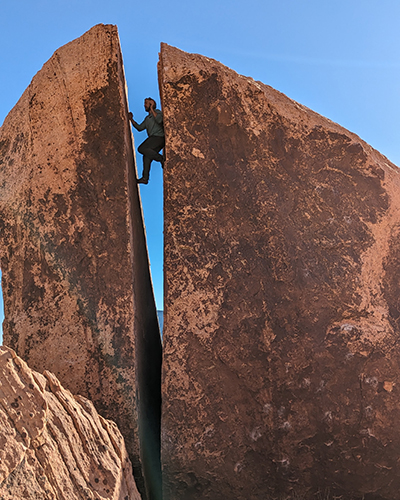
Is there anything else you would like the SLAS ELN readership to know about you?
Crisp: I look forward to connecting with everyone at SLAS2024 in Boston! In my role on the Board, I view myself as a steward to our members, and I encourage our members to freely share any feedback or ideas they may have. Member input is invaluable in shaping the direction of SLAS, and I am here to represent their concerns and perspectives.
Hodder: During the pandemic, I built an electric-powered bicycle to access the local mountain bike trails and vistas near my home. Since then, I have turned this into a hobby, building several more e-bikes for my friends and family. On a sunny weekend, there’s a good chance that you will find me on a bike with one or more other members of the “Pacific Fleet.”
Jennions: I hold my hand up during introductions and refer to myself as a “reformed” physicist – and to this day, I am trying to bring in ideas from other industries to our own, as I am trying to learn and understand what all the exciting life sciences applications are. Please bear with me while I keep learning!
And, it has to be mentioned – though certainly by accident, I gained notoriety a few years back for wearing a certain jacket around the conference; so much so, it’s worth noting that, yes, I’m the pink jacket guy!
Sidelines
Get Involved with SLAS! Learn More about The Society
Read More about Peter Hodder's Guest Editor Contribution to SLAS Discovery
Students and Early Career Professionals – Find Your Place with SLAS!
